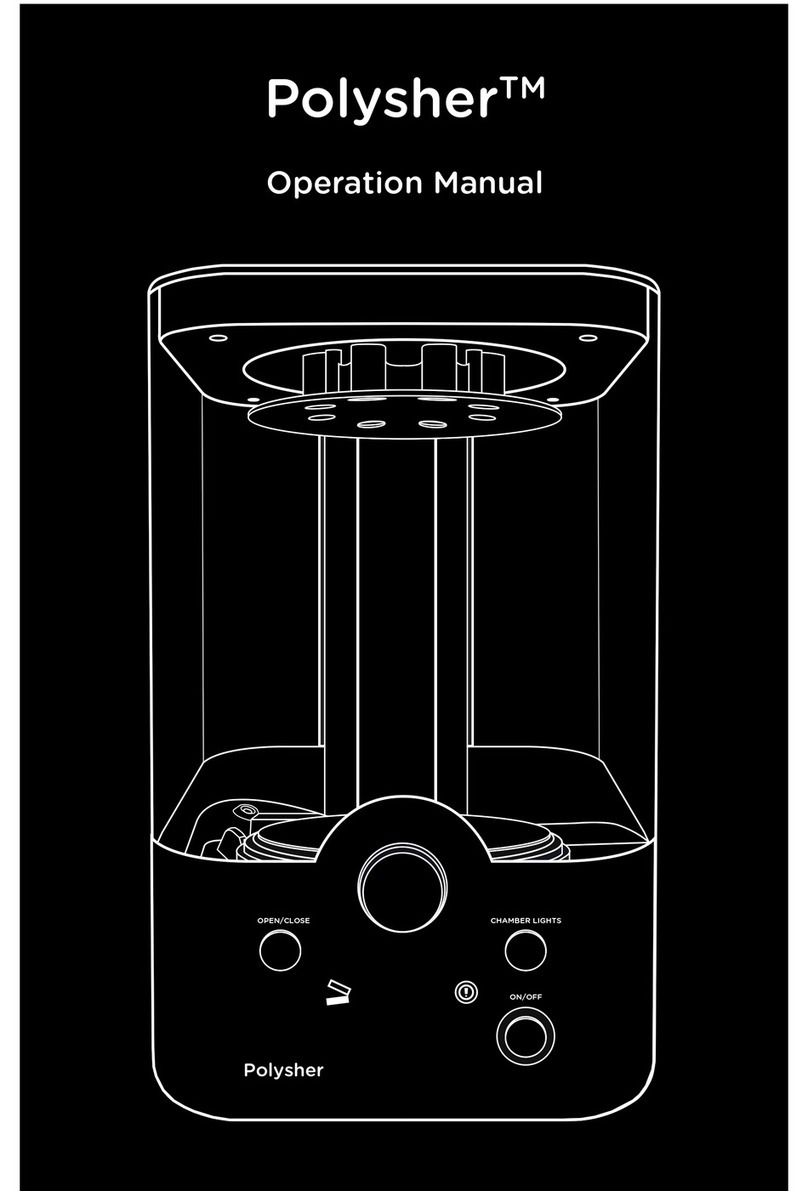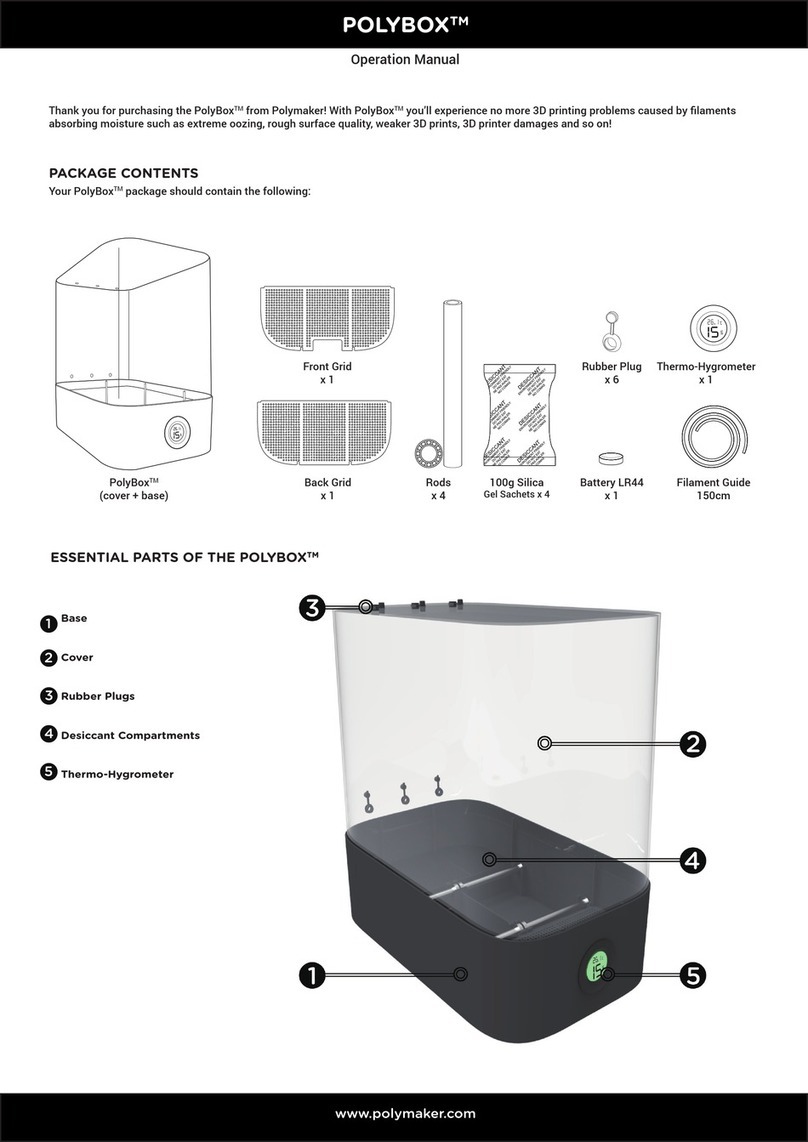8
ON/OFF: Press the button to power on the PolysherTM. Long press to turn off the
PolysherTM.
OPEN/CLOSE: Push the button once to raise the platform of the PolysherTM. Press
again to lower the platform. Press again during the movement to stop the action.
Control Dial: Twist the dial clockwise to start a polishing cycle. Dial clicks in 5 minute
increments displayed by the lights above. Twist left to decrease the time or all the way
to stop the polishing cycle. Press dial in during a polishing cycle then twist left or right
to change the nebulizer light color.
Chamber Casing: Provides an air tight enclosure around the PolysherTM while giving
visibility to your part.
Nebulizer: The nebulizer cartridge is where liquid alcohol from the reservoir is
turned into a ne aerosol that polishes your printed part. Inside the cartridge is a
micromachined metal disc that vibrates hundreds of thousands of times per second. A
sponge wick conducts the liquid solvent to the disc. The nebulizer unit can be removed
by gently pulling up. To insert a replacement nebulizer, align the pins and gently press
down.
Reservoir: Collects and stores alcohol feeding the wicking sponge and nebulizer.
Reservoir Cover: Your PolysherTM comes with two reservoir covers. One for use during
operation with slots (“grate” style) to allow alcohol to ow through. The other is for use
during storage to minimize alcohol evaporation.
Turn Table/Platform: Holds your PolySmoothTM part during polishing. Turn Table
rises up with platform to give access to polished parts. To remove the platform, use the
handles on either side.
Chamber Lights: Press once to turn on the chamber lighting. Press again to turn off
the chamber lighting. Chamber lights take 1-2 seconds to fully dim, press the button
during this time to set current illumination.
Nebulizer Warning Light: Indicates a malfunction with the nebulizer, this could
mean: not enough alcohol in the reservoir, a bad connection between the nebulizer
and port, or a broken nebulizer that needs replacing. A polishing cycle cannot be
started while this light is on. See the Troubleshooting section of this User Manual for
instructions on how to correct these conditions.
Chamber Seal Warning Light: Indicates an air leak in the chamber. Readjust the
chamber casing to ensure that it sits properly on the PolysherTM. A polishing cycle
cannot be started while this light is on.
Priming the Nebulizer: To prime your nebulizer, suck some alcohol into the pipette.
Then squeeze 5-10 drops of alcohol on the nebulizer membrane using the priming
pipette to ensure the wicking sponge and nebulizer are saturated. Prime the nebulizer
when using the PolysherTM for the rst time, or if the reservoir and the nebulizer have
run dry.
DC Power In: The port for the DC power cable is located on the back of the PolysherTM.
ESSENTIAL PARTS OF THE POLYSHERTM
1
2
3
4
5
6
7
8
9
10
11
12
13






























